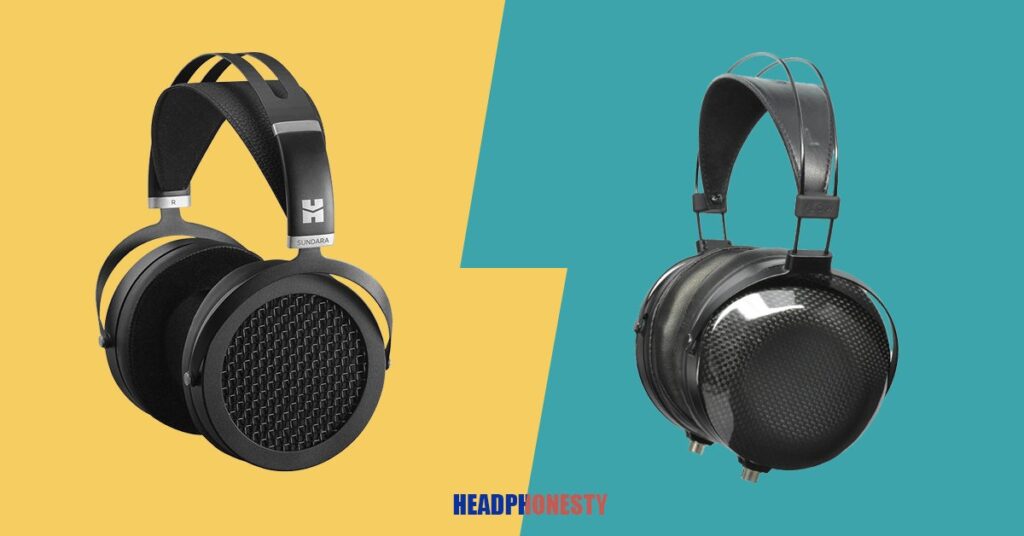If you’re an audiophile or just someone who appreciates good sound quality, you’ve likely come across the debate between open back and closed back headphones. Each type has its own set of advantages and drawbacks, making it essential to understand the differences before making a choice.
What are Open Back Headphones?
Open back headphones are designed with perforations or vents on the outer ear cups, allowing air and sound to pass through. This design creates a more natural sound experience but sacrifices isolation from external noise.
Pros:
- Superior soundstage: Open back headphones provide a more spacious and immersive audio experience, making them ideal for critical listening.
- Breathability: The open design prevents heat buildup, enhancing comfort during extended listening sessions.
Cons:
- Limited noise isolation: External sounds easily penetrate the ear cups, which can be distracting in noisy environments.
- Sound leakage: The open design results in sound leaking out, which can disturb others nearby.
What are Closed Back Headphones?
Closed back headphones feature sealed ear cups that isolate the listener from external noise. This design creates a more intimate sound experience but may affect soundstage and breathability.
Pros:
- Enhanced noise isolation: Closed back headphones block out external noise, allowing for better concentration in noisy environments.
- Minimal sound leakage: The sealed design prevents sound from escaping, making them suitable for use in quiet settings.
Cons:
- Limited soundstage: Closed back headphones often have a narrower soundstage compared to open back headphones, resulting in a less immersive listening experience.
- Reduced breathability: The sealed ear cups can trap heat, potentially causing discomfort during prolonged use.
Sound Quality Comparison
When it comes to sound quality, the choice between open back and closed back headphones depends on personal preference and intended use. Open back headphones typically offer a wider soundstage and more natural sound reproduction, making them ideal for critical listening and audiophiles. On the other hand, closed back headphones excel in environments where noise isolation is paramount, such as commuting or office settings.
Comfort and Breathability
Comfort is another crucial factor to consider when choosing between open back and closed back headphones. Open back headphones often provide better breathability due to their ventilated design, reducing heat buildup and discomfort during extended use. However, closed back headphones may offer better noise isolation, which can be beneficial in noisy environments.
Noise Isolation and Leakage
One of the primary differences between open back and closed back headphones is their effectiveness in blocking external noise. Closed back headphones excel in isolating the listener from surrounding sounds, making them ideal for use in noisy environments such as airplanes or public transportation. In contrast, open back headphones allow ambient noise to pass through, resulting in a more natural listening experience but sacrificing isolation. If you’re interested in a thorough comparison of headphones focusing on their Noise Isolation feature, you may find value in an article comparing the Bose Noise Cancelling Headphones 700 vs Bose QuietComfort 45. Both models offer outstanding Noise Isolation capabilities.
Use Cases and Environments
The choice between open back and closed back headphones largely depends on the intended use and environment. Open back headphones are well-suited for quiet environments where sound leakage and isolation are not significant concerns, such as home listening or studio monitoring. On the other hand, closed back headphones are more practical in noisy environments where noise isolation is essential, such as commuting or office settings.
Durability and Portability
When it comes to durability and portability, both open back and closed back headphones vary depending on the brand and model. Closed back headphones typically offer better noise isolation and durability due to their sealed design, making them suitable for travel and outdoor use. However, some open back headphones feature robust construction and portable designs, catering to audiophiles on the go. If you’re interested in further exploring the comparison of headphones regarding their durability and portability, you may find value in reading an article comparing Beats Studio 3 vs Airpods Pro. Both of these headphone models offer exceptional durability and portability features.
Price Range and Availability
The price range and availability of open back and closed back headphones vary depending on the brand, features, and quality. Generally, open back headphones tend to be more expensive due to their superior sound quality and construction. However, there are affordable options available for both types, making it accessible to a wide range of consumers.
Personal Preference and Use Case Scenarios
Ultimately, the choice between open back and closed back headphones comes down to personal preference and specific use case scenarios. If you prioritize sound quality and immersive listening experiences, open back headphones may be the better option. However, if noise isolation and portability are your primary concerns, closed back headphones may be more suitable.
Conclusion
In conclusion, both open back and closed back headphones offer unique advantages and drawbacks, catering to different preferences and use cases. When choosing between the two, consider factors such as sound quality, comfort, noise isolation, and intended use. Ultimately, the best choice is the one that aligns with your preferences and listening habits.
FAQs
Q. What is the main difference between open back and closed back headphones?
Ans. The main difference lies in their design and sound isolation capabilities. Open back headphones have perforated ear cups, allowing air and sound to pass through, while closed back headphones have sealed ear cups, providing better noise isolation.
Q. Are open back headphones suitable for outdoor use?
Ans. Open back headphones are not ideal for outdoor use as they allow external noise to pass through and may disturb others nearby. Closed back headphones are more suitable for environments where noise isolation is essential.
Q. Do closed back headphones offer better noise isolation?
Ans. Yes, closed back headphones provide better noise isolation compared to open back headphones due to their sealed design, making them ideal for use in noisy environments.







